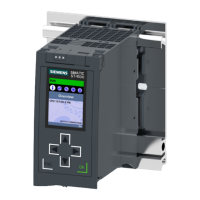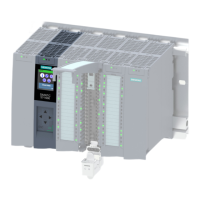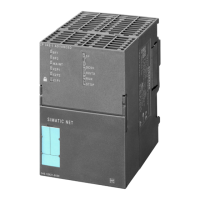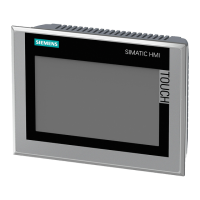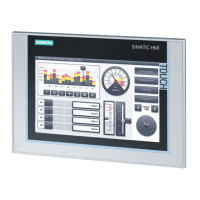How the S7-1200 works
4.3 Memory areas, addressing and data types
Easy Book
36 Manual, 05/2009, A5E02486774-01
The figure shows how to access a bit (which is also called "byte.bit" addressing). In this
example, the memory area and byte address (I = input, and 3 = byte 3) are followed by a
period (".") to separate the bit address (bit 4).
A Memory area identifier
B Byte address: byte 3
C Separator ("byte.bit")
D Bit location of the byte (bit 4 of 8)
E Bytes of the memory area
0
࿆࿇࿈࿉
࿊
࿋
F Bits of the selected byte
Configuring the addresses for the I/O
When you add a CPU and I/O modules to your configuration screen, I and Q addresses are
automatically assigned. You can change the default addressing by selecting the address
field in the configuration screen and entering new addresses. The following figure shows an
example of a CPU 1214C with two SMs and one CM.
• CPU inputs are bits addressed from I0.0
to I0.7 and I1.0 to I1.5 (14 total points)
• CPU outputs are bits addressed from
Q0.0 to Q0.7 and Q1.0 to Q1.1 (10 total
points)
• CPU analog inputs are addressed by the
words IW64 and IW66 (2 analog points, 4
bytes total)
• DI16 inputs are address I8.0 through I9.7
• AI4 / AO2 inputs are IW112, IW114,
IW116, IW118 and outputs are QW112
and QW114
• DI8 / D08 inputs are I16.0 through I17.7
and outputs are Q16.0 through Q17.7
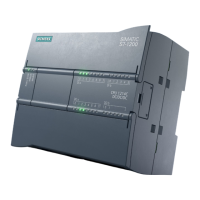
